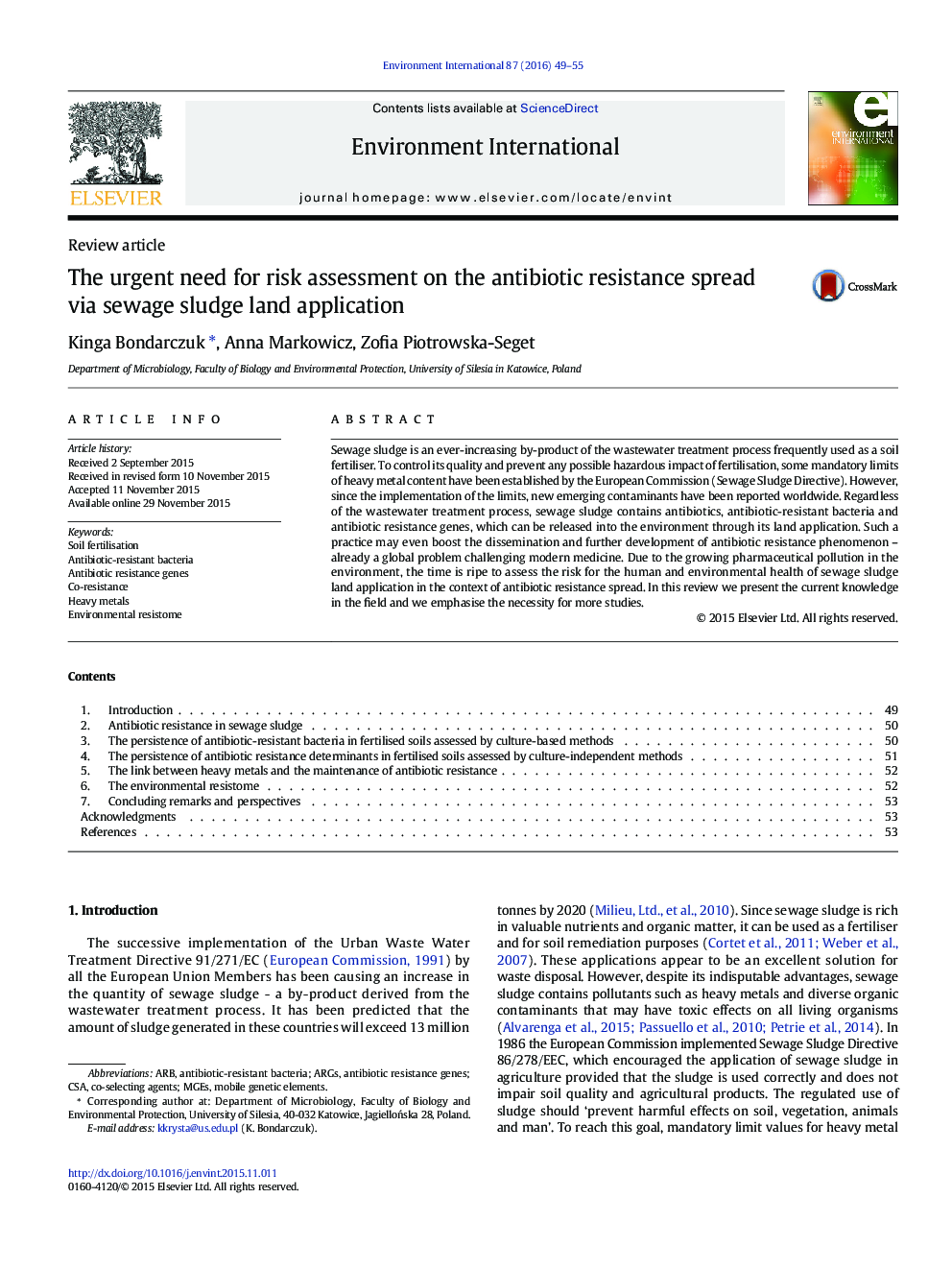| کد مقاله | کد نشریه | سال انتشار | مقاله انگلیسی | نسخه تمام متن |
|---|---|---|---|---|
| 6313307 | 1619041 | 2016 | 7 صفحه PDF | دانلود رایگان |
- Data on antibiotic resistance in sewage sludge fertilised soils were summarised.
- Recently published results and applied methods were compared and elaborated.
- The influence of heavy metals on antibiotic resistance spread was discussed.
- The aspects of risk assessment were underlined.
Sewage sludge is an ever-increasing by-product of the wastewater treatment process frequently used as a soil fertiliser. To control its quality and prevent any possible hazardous impact of fertilisation, some mandatory limits of heavy metal content have been established by the European Commission (Sewage Sludge Directive). However, since the implementation of the limits, new emerging contaminants have been reported worldwide. Regardless of the wastewater treatment process, sewage sludge contains antibiotics, antibiotic-resistant bacteria and antibiotic resistance genes, which can be released into the environment through its land application. Such a practice may even boost the dissemination and further development of antibiotic resistance phenomenon - already a global problem challenging modern medicine. Due to the growing pharmaceutical pollution in the environment, the time is ripe to assess the risk for the human and environmental health of sewage sludge land application in the context of antibiotic resistance spread. In this review we present the current knowledge in the field and we emphasise the necessity for more studies.
Journal: Environment International - Volume 87, February 2016, Pages 49-55
